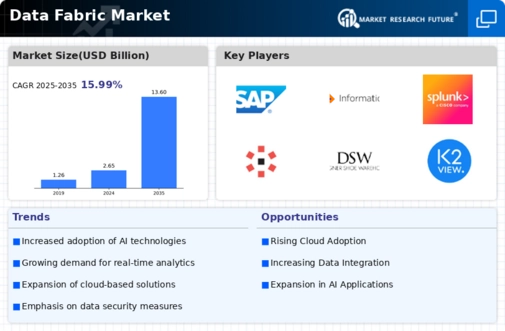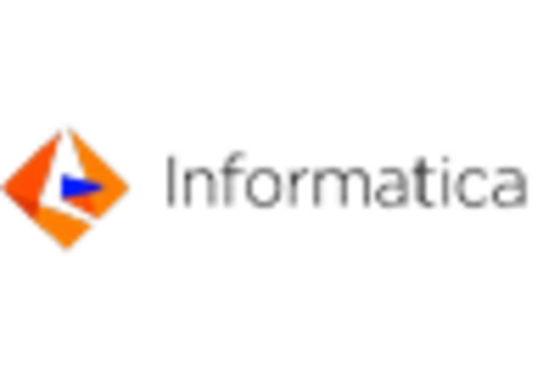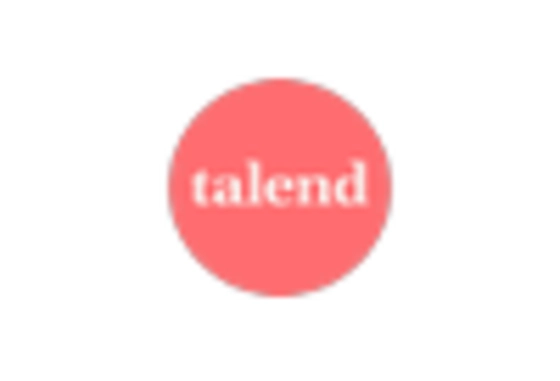Market Trends
Key Emerging Trends in the Data Fabric Market
In conclusion, economic conditions also come into play when instigating any move within the Data Fabric Market. An organization's financial capability determines its level of reliability or willingness to invest in developing robust data integration or management tools. Global events and geopolitical factors can greatly affect how markets behave. The connectedness between different organizational systems around the world causes the same opportunities and challenges. Customer preferences combined with sectoral specifications define what vendors will take into account while constructing their Data Fabrics. This means that each industry has its requirements for managing integrated data regarding finance, healthcare, retail, etc., where different industries need particular ways of handling their disparate information. What differentiates vendors from each other lies in how they use them most suitably for meeting particular requirements, leaving aside conventional ones. In a rapidly changing data fabric market, firms use various strategies to secure a significant position due to the significance of data fabric platforms as seamless and integrated solutions providers. One such basic strategy includes differentiation, where they seek to offer unique Data Fabric features, advanced integration capabilities, or even specialized data orchestration functionalities that distinguish them from the competition. The Data Fabric Market is positioning its products through pricing. Some companies become cost leaders by offering highly robust and effective data fabric solutions at lower prices compared to their competitors, which helps them attract cost-conscious customers. However, some others take on a premium pricing approach that highlights their all-encompassing capabilities as well as state-of-the-art technologies for integrating data. Collaboration and partnerships represent another crucial strategy in the Data Fabric Market. In many instances, organizations create relationships with other IT companies so that they can integrate their data fabrics with complementary products or services of their partners. The global Data Fabric Market's share can be affected by geographical expansion. A company may look into entering new markets or fortifying its presence in existing ones while taking into account various regulatory frameworks and addressing different requirements for managing information in specific regions around the world. Such efforts could include localization needs such as language support and customization based on regional preferences. The technology sector continues to thrive through innovation; hence, it isn't unusual for enterprises within the Data Fabric market to allocate substantial budgets towards research and development (R&D) activities to stay ahead of trends associated with this growth. Introducing cutting-edge features for an improved data fabric and using advanced technology to enable smooth integration of different types of datasets, among other factors, contribute significantly to building an innovative-driven market share position within a given segment. Equally important is customer-centric strategies as far as gaining a good share of the market is concerned within the space of the Data Fabric industry, whereby business understands how each client has unique needs when it comes to handling their kind of information, thus giving a competitive edge. A company that is focused on ensuring excellent customer service experience also has user-friendly interfaces and an active community that is able to retain its customers for a longer time and, hence, increase its market share.

















Leave a Comment